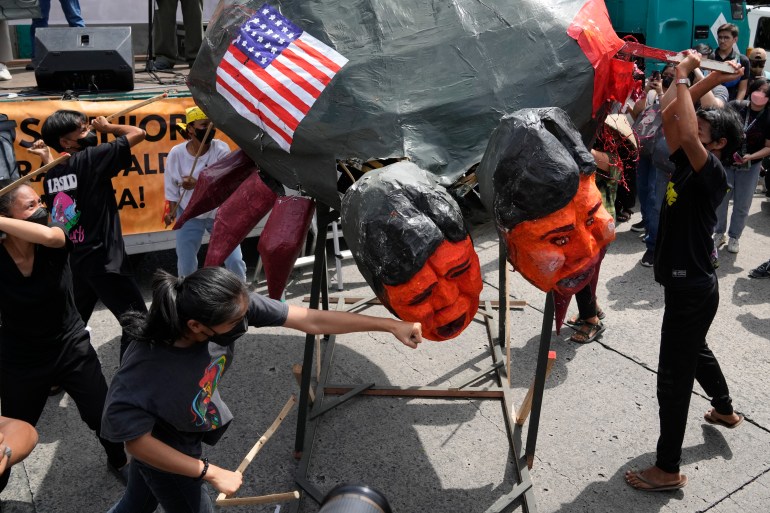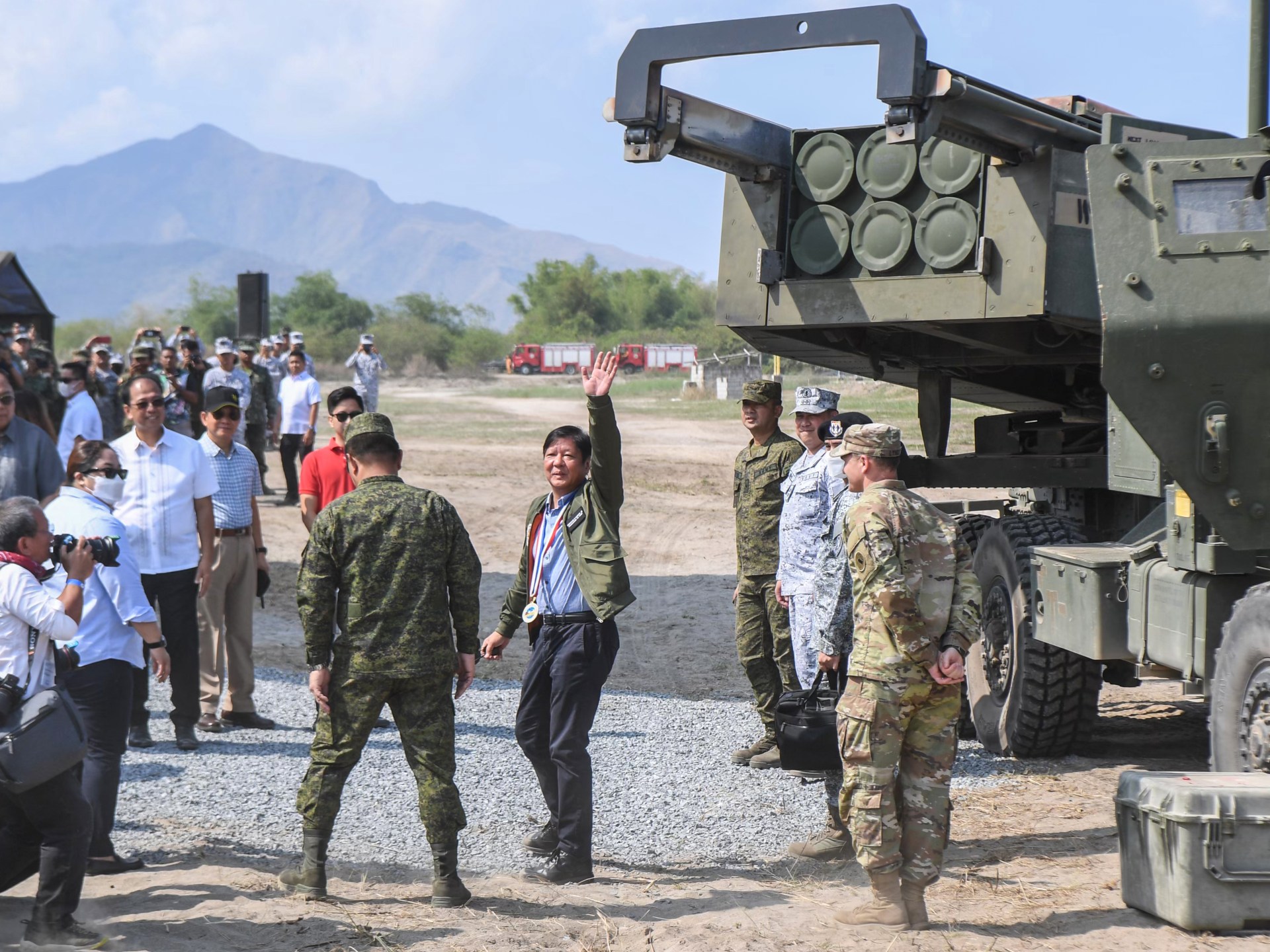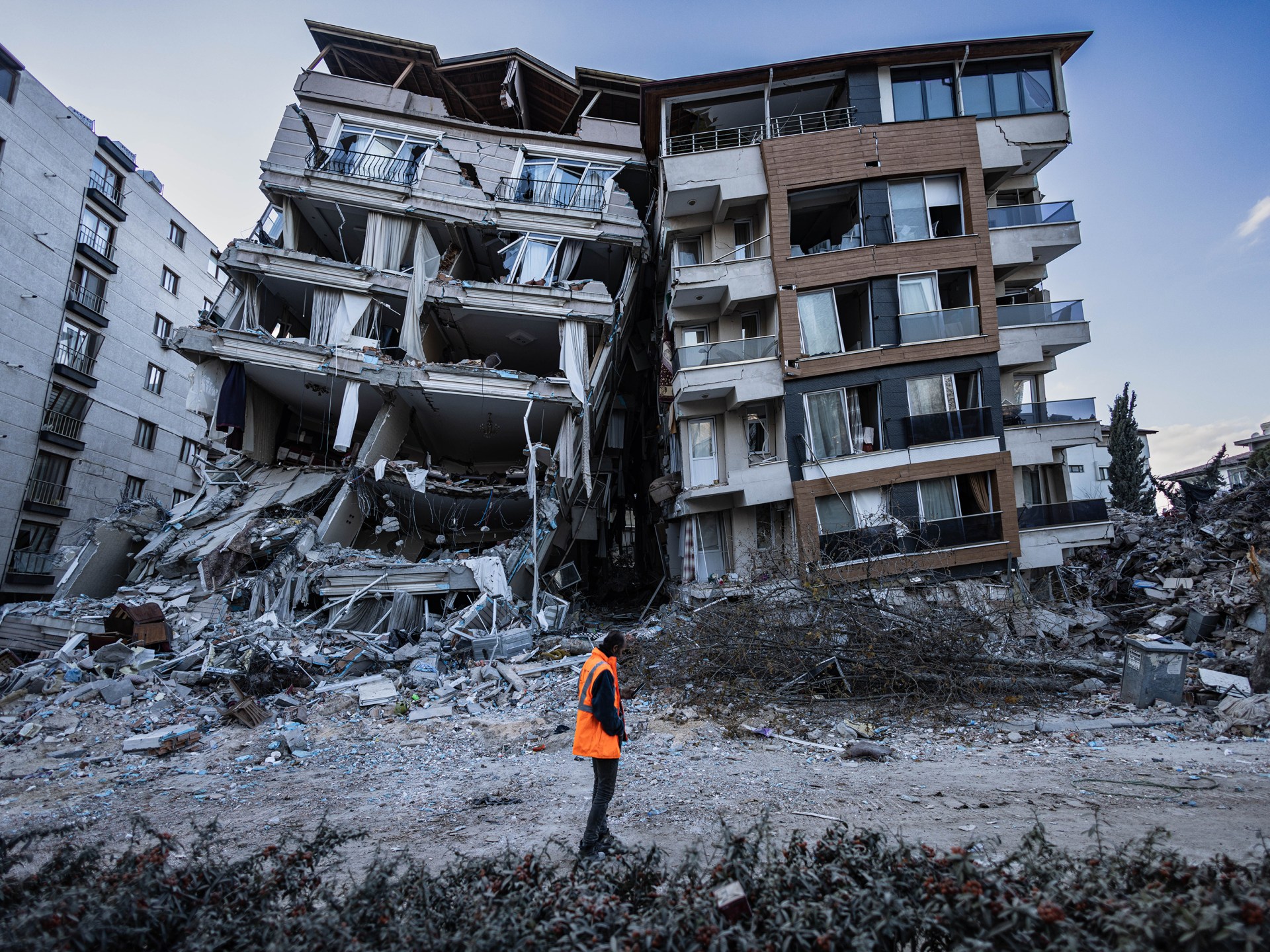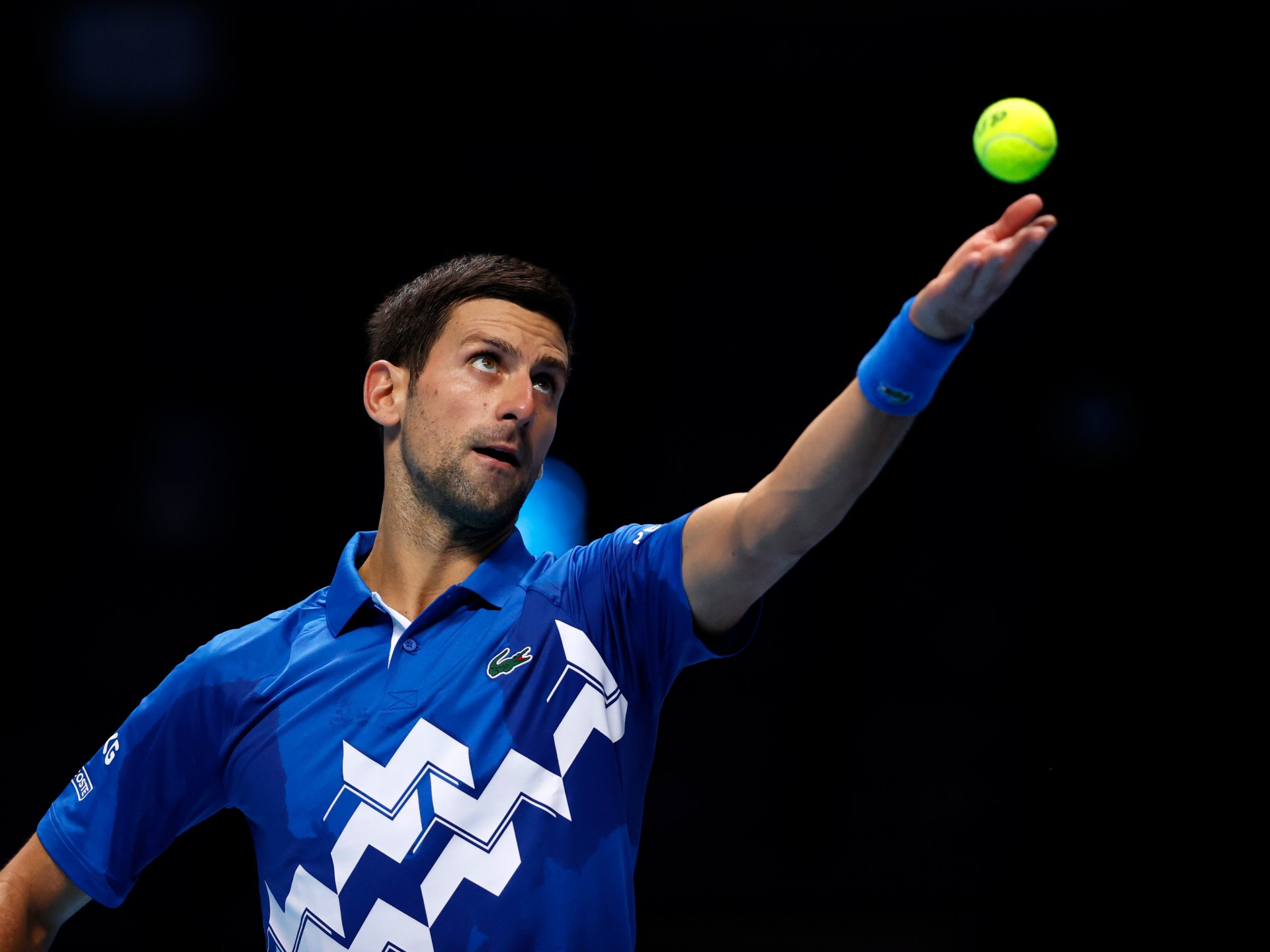Marcos Jr treads a fine line over military ties as he heads to US | Politics News
Manila, Philippines – When they heard Philippine President Ferdinand Marcos Jr was planning to meet United States President Joe Biden at the White House on May 1, Filipino progressive groups immediately made protest plans.
The regular Labor Day rally had a new theme, Renato Reyes Jr, secretary general of the New Patriotic Alliance or Bayan, told prospective demonstrators — the US reaffirmation of the Philippines as its “military outpost” in Asia.
Reyes promised a demonstration in front of the US embassy in Manila and that Marcos Jr would also be greeted by protesting Filipinos in Washington, DC.
The leaders, he said, were expected to announce new bilateral guidelines on the presence of the US military in the Philippines “as if we are a protectorate of America, in clear violation of our national sovereignty and constitution”.
The visit to the White House is the first by Marcos Jr, who was elected in May 2022 and has since steered the Southeast Asian nation closer to the US in contrast to predecessor Rodrigo Duterte who tilted the country towards Beijing.
China is the Philippines’s top trading partner, and while Marcos Jr was honoured with a state visit to Beijing in January, its increasingly assertive claim to almost the entire South China Sea has become a source of increasing disquiet in Manila.
In February, the Philippines lodged a formal protest after accusing the Chinese coastguard of directing a powerful laser at one of its navy ships near Second Thomas Shoal, known as Ayungin Shoal in the Philippines. It also reported China conducted “dangerous maneuvers” in the same area this month.
The US too is uneasy about China’s military ambitions, not only in the South China Sea but also over self-ruled Taiwan, which Beijing claims as its own territory.
In announcing the visit, White House Press Secretary Karine Jean-Pierre said Biden and Marcos Jr would talk about the US’s “ironclad commitment” to defence in the region, plus “efforts to uphold international law and promote a free and open Indo-Pacific.”

The summit comes on the heels of US Vice President Kamala Harris’s November 2022 visit to the Philippines, and US Defense Secretary Lloyd Austin’s meeting with Marcos Jr in Manila last February, which culminated in an agreement to allow the US access to more of the Philippines military bases, a deal that attracted criticism from Beijing.
“It is plain and simple that those moves are part of the US efforts to encircle and contain China,” a spokesperson from the Chinese Embassy in the Philippines said in a statement in March. “To bundle the Philippines into the chariots of geopolitical strife will seriously harm Philippine national interests and endanger regional peace and stability.”
Pax Americana
With its strategic position dividing the South China Sea and the Pacific, the Philippines is a “bone of contention” for China and the US, foreign policy expert Roland Simbulan told Al Jazeera.
The rival powers are competing for influence and control over maritime trade routes, fishing grounds, offshore mineral and gas resources, as well as to secure military dominance, he said.
Despite Duterte being what he called “good friends” with Beijing, Simbulan believes he never really strayed far from the US.
Dependence on and subservience to US military might have been the “lifeline of Duterte and now Marcos Jr,” he said.
The Philippines was a US colony for 48 years, and even after full independence, the two nations maintained a close relationship, which deepened after Ferdinand Marcos Sr became president in 1965.
Marcos Sr sent supporting troops to Vietnam in the 1970s and welcomed a steady stream of US investments into the country.
Even after the elder Marcos declared martial law in 1972, suspending parliament, arresting his political opponents and taking control of the courts, Washington regarded him as a trusted ally.
And when he was eventually toppled in the people power revolution of 1986, the US provided a plane to fly the family to safety and allowed the fallen dictator to live out his life in exile in Hawaii.
Experts say the relationship was a reflection of the geopolitics of the time.
The US “turned a blind eye to the regime’s human rights violations and corruption,” said Professor Michael Pante, a historian at the Ateneo de Manila University.
The late dictator and the US “needed each other. The US wanted a pliant client government in Southeast Asia for its principal geopolitical objective of carrying the banner of Cold War-era anti-communism.”
The strength of the relationship was reflected militarily.
The Philippines was once home to some of the biggest US military bases in the region, including at Subic Bay overlooking the South China Sea.
Those bases were closed in 1992 — Simbulan was a consultant for the Senate at the time — as the Philippines sought to rebuild its democracy after the rampant corruption and abuses of the martial law era.
Since then, US troops have travelled to the archipelago on a rotational basis, making use of domestic military facilities under the Enhanced Defense Cooperation Agreement (EDCA) of 2014.
The US is also the biggest supplier of military equipment to the Philippines, while the archipelago receives the largest share of US military assistance within Southeast Asia.
The newly expanded EDCA means the US will have access to nine bases in the Philippines, including three on the northern island of Luzon, which lies just 300km (186 miles) from Taiwan, one of the region’s major flashpoints.
The deal also provides reassurance to the Philippines, which was so riled by Beijing’s seizure of Scarborough Shoal in 2012 that it took its case to the International Court of Arbitration in the Hague.
The court eventually found China’s claim to the South China Sea had no basis, but Beijing ignored the ruling and has continued to expand its military presence, including in the Philippines Exclusive Economic Zone.
China fallout
This year’s Balikatan — shoulder to shoulder in Tagalog — joint military exercises were a sign that with Marcos Jr at the helm, there is a renewed warmth to the relationship between Washington and Manila.
The drills, which ended on April 28, were the largest ever staged with 12,200 US soldiers taking part.
“The Balikatan Exercise enhances both the AFP [Armes Forces of the Philippines] and the United States Armed Forces’ tactics, techniques, and procedures across a wide range of military operations,” AFP spokesperson Colonel Medel Aguilar said in a statement released by the US Embassy ahead of the drills. “It increases our ability to work together effectively and efficiently in response to various crisis situations.”
Balikatan capped off its last day with live-fire drills and the sinking of a decommissioned ship, and Marcos Jr was there to watch.

China, which this year has staged drills with Cambodia and is about to embark on exercises with Singapore, has shown its anger at the closer relationship.
Chinese Ambassador Huang Xilian claimed the US wanted to use the EDCA deal to advance its own “anti-China agenda” and “interfere in the situation across the Taiwan strait”.
He also pointedly referred to the thousands of Filipinos working in Taiwan.
“The Philippines is advised to unequivocally oppose ‘Taiwan independence’ rather than stoking the fire by offering the US access to the military bases near the Taiwan Strait, if you care genuinely about the 150,000 OFWs [overseas foreign workers],” he said.
The US said EDCA was not about Taiwan, and as Filipinos erupted in fury at what appeared to be a threat against their compatriots, China went into damage control mode, claiming Huang had been misquoted and publishing the full transcript of his comments.
Marcos Jr himself admitted he was “a little surprised” at what had been said but sought to downplay the incident. When China’s Foreign Minister Qin Gang visited shortly afterwards, the Philippines president talked of establishing better “lines of communication” to avoid conflict with Beijing.
As Marcos Jr attempts to navigate the increasing rivalry between the world’s two largest powers — and ensure Manila enjoys a cordial relationship with both — he may find those communication skills frequently tested and not only by Beijing and Washington.
Bayan’s Reyes criticised Marcos Jr’s presence at the Balikatan ship sinking drill, calling him “clueless” about the risks of openly supporting displays of US firepower.
“US militarism is not the answer to the Philippines’s lack of capacity for external defence,” he told Al Jazeera.
“Mr Marcos should know that this is not a harmless Command and Conquer video game.”




